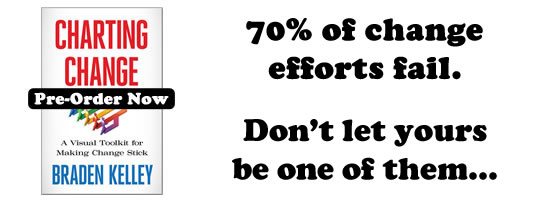Online Marketing Is Dead. Long Live Online Marketing!
 We marketers have all heard the jokes about how half our marketing is working—but we never know which half… That’s a message I really like, actually. We need to hear it from time to time, because—let’s be honest—there remains some truth to it.
We marketers have all heard the jokes about how half our marketing is working—but we never know which half… That’s a message I really like, actually. We need to hear it from time to time, because—let’s be honest—there remains some truth to it.
When online marketing came on the scene, it seemed as if all that might change. New analytics capabilities showed us we’d finally know which half of our marketing was working—and back up those claims with hard numbers.
By and large, it really has worked and helped us innovate. We’re using the sharpest tools on the market to target specific customer segments based on their online behaviors, and drive them toward the actions we want them to take. Still, in some cases, we’re using instruments that may give us a false sense of precision.
What if you took an inventory right now, today, of the facts you know for sure about your customers, versus what I call WAGs (wild-a%# guesses)? How would your marketing mix break down between the two?
We’re getting pretty good at online marketing
I use Flipboard to read news from a variety of sources on my phone. I’ve recently noticed that things I do on the web via my home computer influence the ways I’m retargeted in the Flipboard app. And I don’t use Flipboard on the computer. I don’t log into the Flipboard app with any social credentials.
In other words, Flipboard has figured out how to tie “me†to “me†across platforms, even when I’m not logged into their app. For example, when I go to VRBO, looking for a vacation rental, I’ll see ads from VRBO inside the Flipboard app the next time I use it to read an article.
That’s not just slick—it’s really impressive. It’s surprising, in a good way.
Problem is, do we know WHAT is working?
How does retargeting actually work?
Many of us would say yes, of course! We all use it to increase conversions. As marketing leaders responsible for driving a business, we need acquisition vehicles that convert well—and in my experience, retargeting can be a vehicle that works.
When we see the results that retargeting gets us, it’s easy to reach the conclusion that it falls into the “facts we know†category. But do we really know how it works—and why?
Let’s personalize it. When I see ads for the same vacation rental over and over from the same company, that can help push me into a buying mode. If I’m in a consideration stage, I might just need that nudge—especially if I’m overthinking my vacation plans.
In a case like that, repetition can work. But why does it work? Think about it from the perspective of personal experience: It feels like a sales associate in a retail store following you around with the bar of soap you looked at on the shelf, and asking if you want it, again and again, until you buy it.
Am I wrong?
That’s the state of things today. To some degree, a sales associate who keeps after customers until they convert.
What’s more, retargeting doesn’t always drive sales of the specific product you’re pushing. Look at your analytics, and you’ll see that a percentage of the time, customers navigate to your site and buy something different.
Is retargeting giving us all the insights we need into customer behavior? More important, could our attempts to optimize around this vehicle be distracting from a larger opportunity?
How could it be even better?
Imagine for a moment what might happen if we assigned a bit more power to consumers. What if, instead of exclusively being followed by ads for a product they clicked on, they also had the power to specify products and services they were interested in?
Using my vacation example, what if, instead of just seeing ads for a destination I may or may not be seriously considering, I could specify that I’m planning for a camping vacation, and I need help choosing the right tent? Then I’d see ads for a variety of different tents. The marketer would know exactly where I was in the buying cycle, and I’d see the ads as a helpful service.
Back in the days of analog marketing execution, we marketers spent more time with the “softer†side of business insights. A lot has changed. We work at an accelerated pace, and we rely on data more than ever—rightfully so. But perhaps the best path is one that melds that hard, mathematical data we need with a healthy sprinkle of input directly from the consumer. It could be the ultimate win-win.
Wait! Before you go…
Choose how you want the latest innovation content delivered to you:
- Daily — RSS Feed — Email — Twitter — Facebook — Linkedin Today
- Weekly — Email Newsletter — Free Magazine — Linkedin Group
 Mark Grilli is vice president of product marketing for Document Cloud at Adobe. He is responsible for worldwide marketing strategy and implementation of Adobe Document Cloud, including Adobe eSign services and Acrobat DC. Prior to joining Adobe, Grilli held marketing and client services positions at WebEx (now a Cisco Company) and was co-founder in an e-learning start up.
Mark Grilli is vice president of product marketing for Document Cloud at Adobe. He is responsible for worldwide marketing strategy and implementation of Adobe Document Cloud, including Adobe eSign services and Acrobat DC. Prior to joining Adobe, Grilli held marketing and client services positions at WebEx (now a Cisco Company) and was co-founder in an e-learning start up.
NEVER MISS ANOTHER NEWSLETTER!
LATEST BLOGS
Three things you didn’t know about credit cards
Photo by Ales Nesetril on Unsplash Many of us use credit cards regularly. From using them for everyday purchases to…
Read MoreFive CV skills of a business-minded individual
Photo by Scott Graham on Unsplash The skills listed on a CV help employers quickly understand your suitability for a…
Read More


